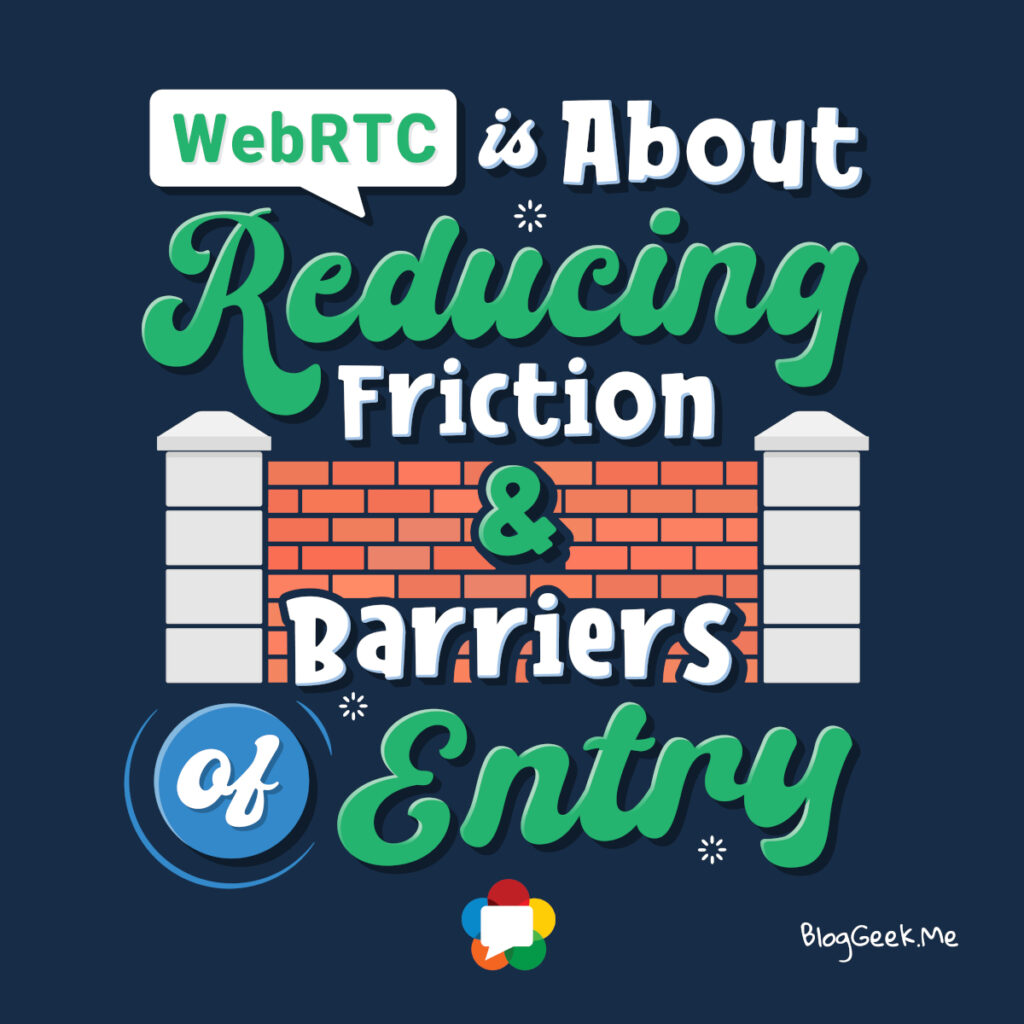Discover how WebRTC removes the barriers of entry and the challenges associated with real time communication application implementation.

[In this list of short articles, I’ll be going over some WebRTC related quotes and try to explain them]
I want to go back to the basics of WebRTC and when it came to be.
People complain that WebRTC is too complex. I say it is the simplest thing we have.
When WebRTC came out, developing a web meeting service that does video was expensive as hell:
- You had to develop your own media framework (or purchase a commercial one, and there weren’t many out there)
- You had to integrate your own signaling into it, even if that was SIP
- You then had to port it to multiple operating systems (at least Windows, Android and iOS, but usually more)
- And then test it. Over different operating systems and hardware configurations. Different Windows machines act differently (surprise – you likely don’t remember that), and you had to purchase them, test on them, deal with complaints from customers
It was a royal mess.
I wouldn’t start such a project without $1-2M investment just to get a first clunky and limited version to show for it. I know, because I’ve done it once or twice where I worked prior to WebRTC’s launch.
–
What did WebRTC bring with it?
The above… in a day. Or a week:
- A commercial grade media engine, built into every browser
- Widely tested across operating systems and devices
- Running multiple voice and video codecs
- With all the bells and whistles of network impairment adaptation logic
- The notion and reality of royalty free voice and video codecs – Opus, VP8, VP9 and AV1 have all became commonplace, widely accepted and adopted
- All that goodness, with a standard API on top
The end result was that a small team or even a single developer can now build a proof of concept in a short timespan, cutting down the initial investment to virtually nothing. This means you can get something out there either on seed funding or on a shoestring budget.
It also changed the nature of the developers. Most developers using WebRTC aren’t the classic VoIP developers. They don’t have that skill set or training when they start off – they simply take some open source project and move on from there, trying to figure things out for themselves. Sometimes it works. Sometimes it doesn’t. But it does bring with it a lot of creativity and out of the box thinking (simply because they don’t know where or what the box even is).
–
Scaling a successful service still is a huge challenge. For that, you do need to understand the technology intimately.
But that first step? And the second? And the third?
A lot easier to do with WebRTC than it ever was before.
The barrier of entry and friction for developers to use such technologies has gone dramatically down.
–
So if before, the barrier had been having enough money and the training necessary.
That is no longer the case.
You just need a darn good idea, that WebRTC is a viable solution for, with the ability to execute it. Sprinkle on that great timing and luck and you’re good to go.
The barriers needed for your business? They now need to come from elsewhere. WebRTC won’t give them to you.
Need help?
👉 Be sure to follow this blog, as it is the most up to date resource out there about WebRTC
👉 Subscribe to WebRTC Weekly to get a picture of what others are publishing about WebRTC out there
👉 The WebRTC Insights service takes care of a lot of what goes on in the market for you, as well as the progress made by browsers with WebRTC support
👉 I can assist with figuring out what is possible with WebRTC, and where to focus your energies in putting up the mote you need for your business
